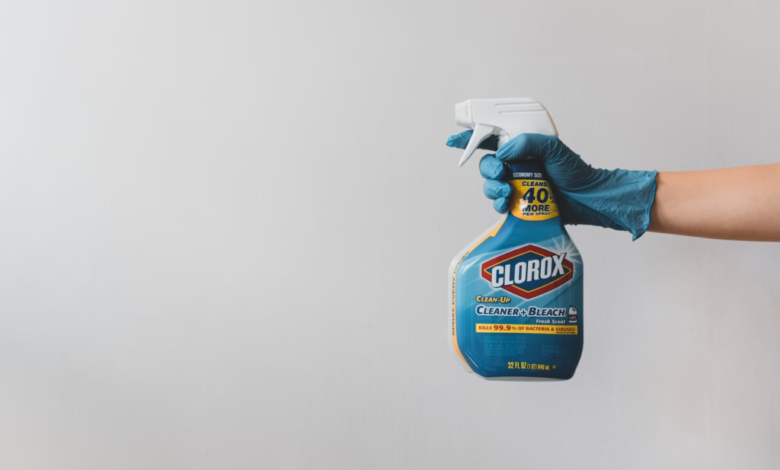4 Dangerous Commercial Synthetic Chemicals For Humans: A Silent Threat

Did you know that of the 84,000 chemicals known to humans, only 1% have been tested for safety? Hundreds of synthetic chemicals lurk in everyday products like cosmetics, cleaning supplies, and even the food we consume. As the name suggests, these chemicals are manufactured in a laboratory and have become ubiquitous in the modern-day lifestyle.
While most of these synthetic chemicals are safe for human use and improve the quality of life, some are silent threats linked to various health risks. These risks range from hormonal disruption to cancer, which can be life-threatening. In this article, we will look at some of the most dangerous commercial synthetic chemicals so that you can make informed choices for your well-being.
Defining the Danger
Remember that the most dangerous synthetic chemicals are not the ones with immediate, acute toxicity. On the contrary, they are the ones with insidious and long-term effects, which kill you slowly. This includes those that don’t break down and build up in the environment, like PFAS, and those that build up in the bodies of organisms and move up the food chain.
Pesticides are an example. According to a report, 17 major food manufacturers were graded F for their inability to reduce pesticides in their products.
These chemicals have the potential to cause long-term health effects like neurological damage, cancer, and endocrine disruption. Safeguarding the general public against these harmful chemicals is crucial. This is why we have regulatory agencies, like the EPA, to identify these chemicals and issue bans to protect public health.
The Top Offenders
Now that you know the dangers of synthetic chemicals, let’s delve into the most dangerous chemicals for human health. From PCB to PFAS, let’s look at the list of the top offenders when it comes to synthetic chemicals.
Polychlorinated Biphenyls (PCBs)
According to TorHoerman Law, PCBs are toxic chemicals used in industrial and commercial applications until banned or restricted. These chemicals are typically found in construction materials, lubricants, carbonless copy paper, and more.
However, they came into the limelight with the PCB lawsuit, alleging that the chemical was found in building materials and old fluorescent lighting in schools across the U.S. Unsuspecting schoolchildren and teachers are said to be among the victims of chronic exposure to PCB.
Phthalates
These are the chemicals used to make plastic more flexible and harder to break. They are also used as solvents or binding agents. Exposure to phthalates is widespread, considering that they are present in almost everything from cosmetics and personal care products to food packaging and detergents.
These chemicals are believed to be endocrine-disrupting and can cause reproductive and developmental health issues, among other things. To protect your health against phthalates, use glassware instead of plastic and avoid anything with a fragrance of phthalates listed on the label.
PFAS
PFAS are infamously called “forever chemical” because of their inability to break down and persistence in the environment or human body. It’s widely regarded as dangerous because of the harmful health implications like cancer in military personnel, firefighters, and industrial workers who dealt with AFFF.
However, PFAS is also said to be present in common-use products like non-stick cookware, stain and water repellents, take-out containers, food packaging, and even pizza boxes. It has been linked to cancer, liver damage, immune system disruption, impaired fertility, and more.
Bisphenol A (BPA)
Bisphenol A, or BPA, is an infamous group of around 40 chemicals used to make plastics, epoxy resin, and other materials since the 1960s. It is considered a building block of plastic and one of the most used industrial chemicals. It is present in almost everything from food packaging to medical equipment.
While research is still ongoing regarding the health impact of BPA, it has been widely recognized as an endocrine disruptor. The chemical is said to mimic estrogen in the body. To safeguard yourself against the harmful impact of BPA, it’s advised to cut down on canned food and use BPA-free plastics.
The Hidden Dangers
Apart from the individual risks of specific chemicals, the cocktail effect is a significant concern for people. The cocktail effect refers to the potential of various synthetic chemicals to react with each other in ways that amplify their negative health impact. As of now, not much is known about these chemicals’ combined effects; therefore, the long-term consequences have yet to be discovered.
As you can tell by now, while these substances might not be visible to the naked eye, they pose a silent threat to our health in the long term. Educating ourselves and making informed choices can reduce exposure and safeguard our health. Start reading the product labels carefully and switch to organic or natural alternatives wherever possible. This will save you from fatal diseases and is also good for the environment. For hygiene and cleaning solutions, consider the commercial products offered by Reza hygiene.




